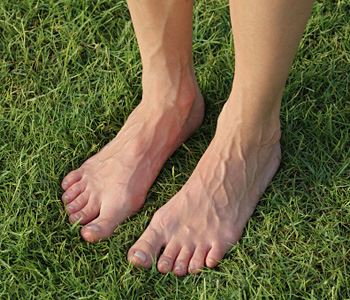
21
Feb
Is surgery your only option for varicose veins?

By middle age, nearly everyone has some type of problematic veins – spider, reticular, or varicose. You may mistakenly believe that surgery is the only treatment available. However, with modern technologies and time tested minimally invasive treatments, most veins can be resolved without surgery.
Understanding veins
The average adult body contains about 100,000 miles of arteries, blood vessels, capillaries, and veins. Some bring freshly oxygenated blood to organs, while others return deoxygenated blood from extremities to the heart. One-way valves in veins keep blood flowing the correct direction. As we age, vein walls weaken, causing these valves to malfunction. Blood may backflow and pool, causing veins to enlarge.
Types of abnormal veins:
- Spider veins are a fine meshwork of visible red, purple, and brown capillaries near the surface of the skin. They are generally not raised or painful, but are a cosmetic issue. Spider veins are common on legs, and may develop on the face as well.
- Reticular veins are blue or purple, and a bit larger. Known as “feeder veins,” they are usually found on the ankles, legs, and backs of thighs.
- Varicose veins are large, twisting, ropey veins that often cause discomfort. Untreated varicose veins can lead to a serious condition called chronic venous insufficiency.
Non-surgical treatment options
Dr. Adam Maddox offers several non-surgical and non- or minimally-invasive vein treatment options at Thrive. In many cases, superficial veins can be successfully resolved with laser therapy. Light energy targets pigmentation in spider veins, destroying them without harm to surrounding tissues.
Dr. Adam Maddox – Medical Director

A graduate from Northern Arizona University and the National College of Naturopathic Medicine, Dr. Adam Maddox is a very established professional in the field of integrative anti-aging and aesthetic medicine with a special interest in Botox, Restylane and Testosterone Replacement therapy for men to name a few.
As a board-certified physician, he has a passion to help people with their health especially as they get older. Dr. Maddox believes in maintaining a strong sense of empathy in order to better serve his patients whilst ensuring his care is personalized. In addition to practicing medicine, Dr. Maddox uses his time to train other medical professionals on various effective medical techniques used in the anti-ageing medical sphere such as injectable techniques. He is also the founder and medical director of Thrive Aesthetic and Anti-Aging Center in Portland, OR.
Why Our Patients Love Us
Success Stories
Tried Several Treatments With Thrive and Its Perfect

Hi, I’m Rachel Stahl. I’ve been coming to thrive for about five years. I definitely started on the lower end, just like a little bit of Botox a little bit of preventative ageing treatments and have always felt really, really comfortable. I felt that I can get an honest answer if I need a little more of a treatment, but I’ve also definitely had the experience feeling self-conscious and having the staff here totally put me at ease of like you look great. You don’t need to do a tonne more. I feel like I can really trust their opinion because I’ve been given positive feedback the whole time I’ve been coming here. I’ve recommended a tonne of friends because of that and I have never heard a negative review of the clinic. I’ve just always felt really, really comfortable. I got comfortable enough to start doing a little bit of laser therapy and I also got to do Miradry on my armpits and I’ve just never really been disappointed by anything. I feel like they make really solid recommendations and everybody is super friendly. It’s always been really easy to schedule, which is huge for me to working in the area. It’s just an amazing place. Everybody is really great.
Tried Miradry on My Armpits and Its Working - Highly satisfied patient

Hi, my name is Sarah and I’ve had hyperhidrosis for the past 17 years and I’ve tried many forms of treatment. I’ve done medications under the arms. I’ve switched medications that maybe would cause extra sweating under the arms. I’ve even tried Botox and I went as far as I was looking into treatment during surgery which I found to be very risky for myself with not very many good outcomes, and with the hyperhidrosis, it is a very embarrassing condition. It can affect relationships; it can ruin a lot of clothes. It has ruined a lot of clothes and it’s something that I’ve had to live with for So, long. I wanted to be able to have something done to be able to help with the effects of this and I was on the internet one day. It was actually on Facebook and I was going through, I was just scrolling through and I found an ad and it was talking about, do you have access sweating and I had clicked on it and was looking around and I found that there was a procedure for Miradry, and I was looking around trying to find a place that was near my area and I happened to find thrive, and I wanted to see that that it was a, a, good clinic with good ratings. A clinic that people have known about. I didn’t want to just go anywhere to be able to get this procedure done. So, I did my research and I decided to go ahead and book an appointment. I knew it was going to be less invasive than going through with the surgery, plus I couldn’t find a provider that was willing to send me for the surgery because of all the risks that could happen with me and not such a great outcome. So, I went ahead and I booked my appointment and I got to meet Tristan. I actually had every intention to listen to my music during the procedure because I knew it was going to be super nervous and I ended up not being able to find my headphones but Tristan was very personable. Great bedside manners and it was just like I was there talking to a friend and then I got to meet doctor Maddox who was able to do all the numbing under the arms. That’s the only part of the procedure that I actually felt was just the injections for the numbing. And then there’s a grid. It looks like a tattoo that goes on the arm, and then that is where the laser is on the arm and it just moves all around to the areas where I have all the excessive sweating. I don’t feel anything during the entire process. I was relaxed. I wasn’t nervous once I got in there and was able to talk to Tristan. She was able to explain everything, step by step, and I pretty much knew since my condition was severe and I’d had it for So, long I expected to have to have at least a second treatment, maybe even a touch up.
I knew that I wasn’t going to just need one treatment. I knew that going in there So, it was extremely grateful to be able to try this procedure to see if it would work and so, once I got done with the procedure, I, I, still didn’t feel any pain, just very I felt like my arms were pretty swollen. I was able to get myself ready to leave. I was given ice packs, So, I just continuously iced my arms. I wanted to follow all the instructions, exact because I wanted to be sure that this was going to work for me. I had invested my time everything into this procedure to ensure that it was going to work for me. I wanted this to be the most permanent. I didn’t want to have to keep dealing with this, 17 years is a really long time to have to deal with all of this and when I got home, I noticed, you know, I still had the swelling, which is expected you know, it can go on for several weeks. I continuously iced my arms. I noticed some bruising that was happening, which I was already warned about and I felt for the procedure that just having the bruising and the swelling, knowing that it was going to be going down, I was noticing improvement within the next couple of days as the swelling was going down. I would still have wetness under the arms but it was still healing, and it does take time to heal. It could take several weeks to heal and actually be able to see the full effect. So, I ended up doing a second treatment, which I’m glad I did because I knew that I was going to need a second treatment and everything was exactly the same process and making sure that I did all the icing and I followed all the instructions and now I can say since I’ve completed the second session, in that the underarm sweating has really diminished. I would say that I’m closer to a 75 80 percent. So, coming from someone who from the morning, I from the moment I would wake up in the morning to go into bed, I always had the underarm sweating. It never went away. There’s no on and off switch. There was nothing I could do. Even changing the environment being either in a warm environment, cold environment, calming environment, stressful. This was something that would never go away. I couldn’t, I couldn’t adjust but I’ve dealt with it for So, long and I know that the Miradry is working because I have proof of it. I have my pictures. I know how severe this was and I’m really grateful to be able to come here to the thrive clinic to be able to do this near dry and I would recommend it to any of my friends and family. Anybody who has this excessive sweating that is too embarrassed to come forward. Give it a try because I know that it’ll help change your life.
VanquishME and Cellutone

Hi, my name is Tia Sanders. I’m a mother of two very beautiful but large children. Um, let’s see. I thought I’d try this because. Uhm, after having kids I had a little extra in the mid-section and I was dieting and just starting to get back into working out. And you know this came along and I thought I’d give it a go. And the vanquished treatments were a little toasty. It definitely warmed you up, and luckily, we had a fan going to kind of keep me cool, and you can feel like little tingles. And definitely some warm, warm, throughout your whole midsection throughout your whole treatment. It was super. Easy come. The seller tone helps, like break up everything afterwards and I kind of made up the transitions a little bit smoother and it was. It was really relaxing to an extent after dealing with kids all day, I was able to lay down and just kind of get those extra little areas taken care of.
I was a little nervous about my results at first. But then luckily everyone took photos before and after and I there was a drastic change between the first time I was in here and the last time I was in here and doctor Maddox was telling me that I will continue to see results like the little back fat. Kind of like lifted and kind of started to like disappear. And that was huge for me and you could see like my belly that was, you know, post baby belly was starting to lift again and that was such a huge encouragement to like want to keep going. So, my clothes are definitely fitting a lot better around the waistline. I’m not to wear. My goal is, but it’s definitely I’m able to those pants that I have that many will put on for a couple of months. So, I’m definitely excited. And yeah, I’m happy. I would definitely. Recommend trying thrive or working with right because they are super personable, they’re. They’re very warm when it comes in it. Sometimes you’re worried about like a very clinical setting inside outpatient type doctors’ offices, it seems, but everyone kind of put you at ease and relaxed and, and, yeah, it just felt very comfortable.

